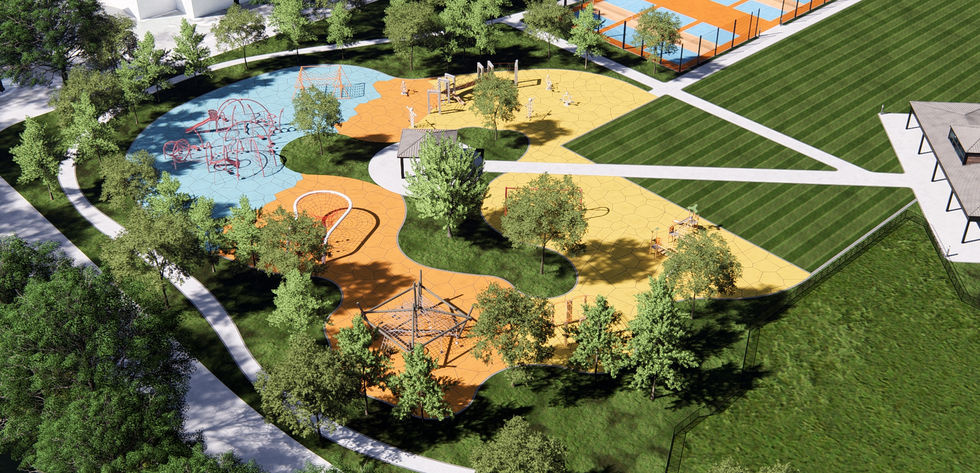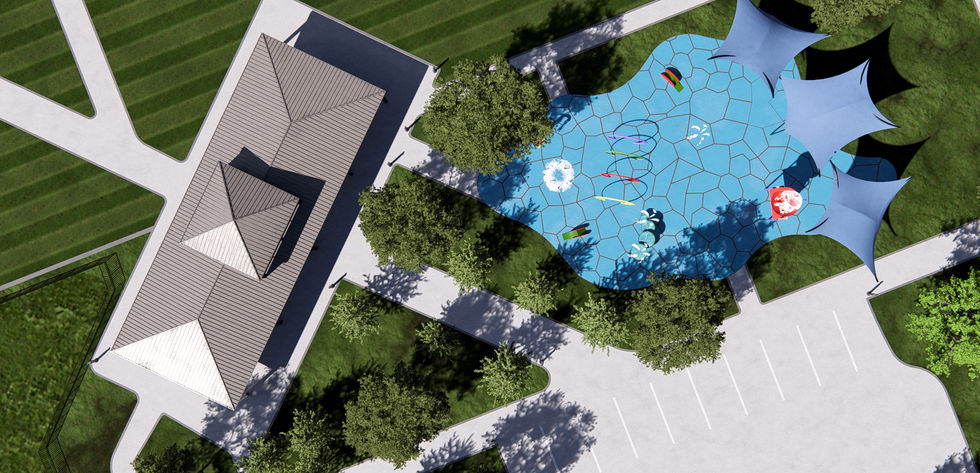Proposition C
Herfurth Park
Proposition C Herfurth Park
$4,000,000
Design and construct Phase 2 and 3 of the Herfurth Park renovations. The Herfurth Park design expands event space, enhances downtown transit-oriented development opportunities, and includes:
• Main Plaza
• Bandstand and Food Truck Space
• All-ages Agility Course
• Walking Trail
If approved, this funding will complete the renovation of Herfurth Park.
Location: 4601 Centennial in Downtown Rowlett
Herfurth Park was established in the 1970’s and expanded during the 80’s. Herfurth Park served as the baseball complex until 2011, when all ball sports were moved to Community Park. In 2018, Scentral Bark Dog Park was constructed and pickleball lines were added to the existing tennis courts.

Enhance Quality of Life
Strategic Priority
-
2000 to Present – National Arbor Day Foundation Tree City USA
-
2021 - Scenic Texas’ Gold Level Certified Scenic City
-
2021 – MoveBuddha’s Most Popular Mid-Size Cities for Home Buying Opportunity
-
2020 - AARP Age-Friendly Community designation
-
2020 – US Census Bureau #8 Fastest Growing City in the Country
-
2019 - Top 10 Small Towns to Retire by US News and World Report
-
2015 – Nerdwallet Top 50 Best Small Cities for Families
-
2014 - Money Magazine’s Top 25 Places To Live
-
2013 - Movoto Best Small City To Move To
-
2017 - Neighborhoods USA’s Newsletter of the Year

Parks & Recreation Facts:
Rowlett has over 600 acres of parkland with 30 current and future parks, walking trails and green spaces.
-
Paddle Point Park is #29 on the Texas Parks & Wildlife Department’s Paddling Trail list, bringing kayak and canoe enthusiasts into Rowlett from all over Texas.
-
Community Park hosts baseball, softball and soccer tournaments, bringing 500,000 visitors a year to Rowlett.
-
The Rowlett Community Centre offers a full-service fitness center and dozens of convenient classes and programs for all ages, from toddlers to senior citizens.
-
More than 200 million people across the United States live within a 10-minute walk of at least one park or trail.
-
Seventy-four percent of U.S. residents live within a walkable distance of a local park or other recreation opportunity (including playgrounds, open space, recreation centers).
Did you know?
-
Access to indoor and/or outdoor recreation facilities and frequency of park visitation correlate with greater physical activity; people who use parks and open spaces are three times more likely to achieve recommended levels of physical activity than non-users.
-
Greenspace exposure corresponds with improved physical health, including decreases in stress, blood pressure, heart rate, and risk of chronic disease (cancer, diabetes, cardiovascular heart disease).
-
Children with access to parks and facilities have shown decreased prevalence of obesity compared to children without access.
-
Time spent in nature positively impacts mental health by increasing cognitive performance and well-being and alleviating illnesses such as depression, attention deficit disorders, and Alzheimers.
-
Children lacking parks are more likely to be physically inactive, have excessive screen-time (greater than or equal to 4 hours daily), obtain inadequate sleep, and be obese, overweight, or diagnosed with attention deficit hyperactivity disorder (ADHD).














